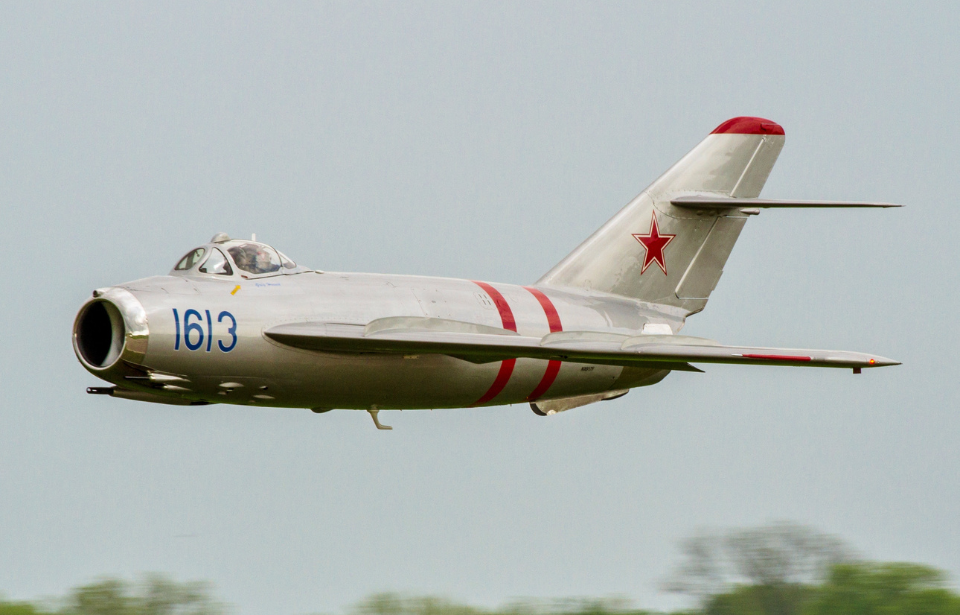Developed by the Soviet Union in the 1950s, the Mikoyan-Gurevich MiG-17 quickly became a symbol of advanced aerial warfare technology. A successor to the famous MiG-15, the aircraft was flown extensively during the Vietnam War and featured several improvements that made it a formidable opponent in the skies. While largely retired, this Cold War-era fighter continues to see service with at least one country’s air force.
Mikoyan-Gurevich MiG-15
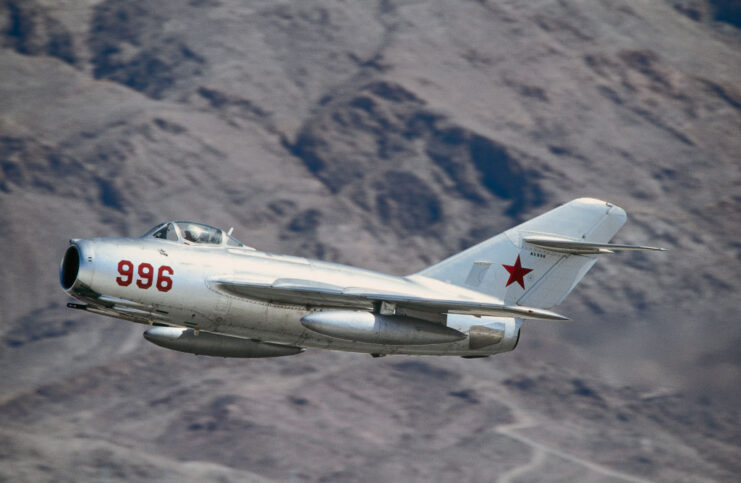
The Mikoyan-Gurevich MiG-15 entered service with the Soviet Union in 1949, with its design based on documents that had been captured from the Germans following the Second World War. A more potent variant, the MiG-15bis, entered production in 1950, with both it and the original version of the fighter being operated by the Communist forces during the Korean War.
The “bis” variant was capable of hitting a top speed of 669 MPH, thanks to its Klimov VK-1 turbojet engine, which was a copy of both the British Derwent and Rolls Royce Nene. This, paired with its then-revolutionary swept-wing design, made it a quick and fearsome foe, especially when paired with its three cannons and ability to carry a variety of bombs.
Over the course of its production, 13,130 MiG-15s were manufactured, along with a couple-thousand more licensed variants, making it one of the most produced jet aircraft in military aviation history.
Addressing the limitations of its predecessor
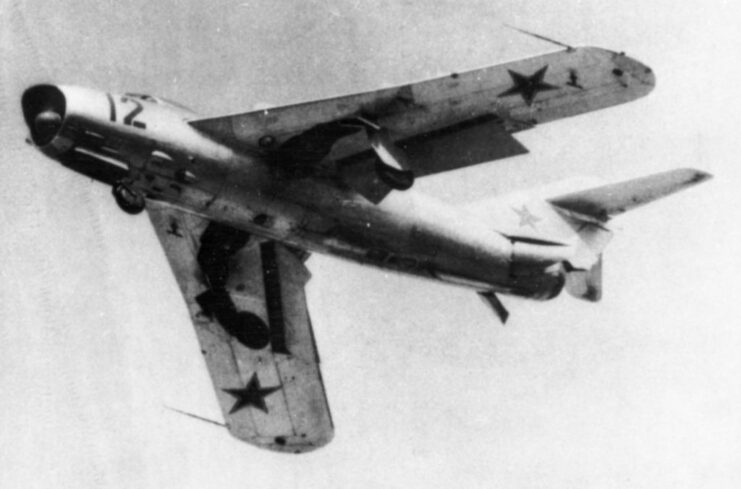
While it looks like the MiG-15, the MiG-17 was designed to address the limitations observed in the former
With a more powerful engine and an improved wing structure, it offered better handling at higher speeds and a greater agility in combat. One of the standout features was its continued use of the MiG-15’s swept-wing design, which reduced drag and allowed for greater speed and efficiency. This was critical in giving the fighter an edge in dogfights, enabling it to outmaneuver the enemy with ease.
The engineers involved in the development of the MiG-17 focused heavily on enhancing its aerodynamic profile. The aircraft’s airframe was elongated and modified to include a thinner and more angular swept wing, as well as a third wing fence on each wing to accommodate its engine, which provided a greater thrust-to-weight ratio, significantly improving its acceleration and climb rates, all while being more controllable at higher speeds.
These enhancements not only made the MiG-17 that much faster, but also more responsive in the heat of battle, allowing pilots to execute complex maneuvers with more confidence and precision.
Mikoyan-Gurevich MiG-17 specs.
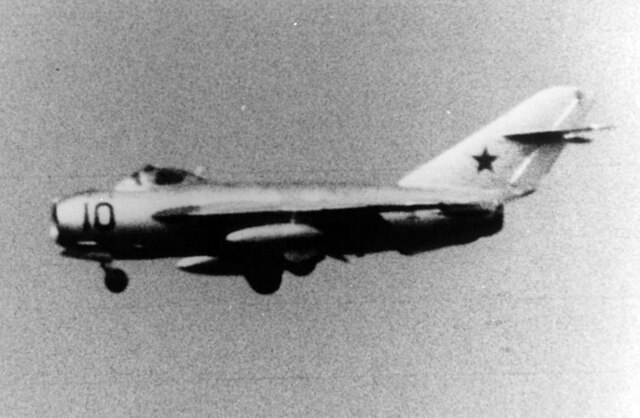
A closer look at the MiG-17’s specifications reveals why it was so effective. At first, the aircraft was equipped with the Kilmov VK-1 engine, with the “F” variant later featuring the first Soviet fighter use of an afterburner. Equipped with this more powerful engine, the MiG-17 could reach speeds of up to 711 MPH.
Its armament included three cannons – a single 37 mm Nudelman N-37 and two 23 mm Nudelman-Rikhter NR-23s – and it could carry rockets and bombs, which were effective in both aerial and air-to-ground combat. Units that were manufactured under the “PM” designation were also given the ability to carry four Kaliningrad K-5 missiles.
The MiG-17’s rugged design also meant it could endure significant damage and still remain operational, a crucial factor in its longevity and popularity. This robustness was complemented by the fighter’s straightforward maintenance requirements. Its durability and ease of repair ensured it could serve effectively for many years, often outlasting other contemporary aircraft in terms of operational life.
How did the Mikoyan-Gurevich MiG-17 shape combat in Vietnam?
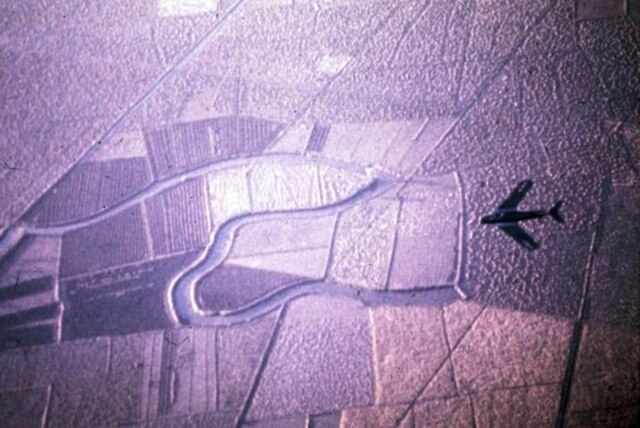
Introduced too late to see combat over Korea, the Second Taiwan Strait Crisis and the Vietnam War were when the MiG-17 first got a taste of action. It’s at this point that it should be noted that the aircraft was intended to serve as an interceptor, as opposed to participating in dogfights. That being said, it primarily wound up serving as a day fighter.
During the latter conflict, the MiG-17 proved its mettle against more technologically advanced American aircraft like the Republic F-105 Thunderchief, the Vought F-8 Crusader and the McDonnell Douglas F-4 Phantom II. Despite being largely obsolete during this time, the fighter’s superior maneuverability and tactical flexibility allowed North Vietnamese pilots to engage successfully in aerial combat; its ability to perform tight turns and rapid climbs was particularly useful in ambush tactics.
North Vietnamese aviators developed innovative combat tactics that leveraged the MiG-17’s strengths, often engaging in hit-and-run attacks against the enemy. By 1971, the aircraft had begun to see use as a fighter-bomber, with its primary targets being ships operated by the US Navy.
These tactics disrupted the usual combat strategies employed by the North’s adversaries, forcing them to rethink their approach to aerial warfare. In the United States, this effort was codename “Project Feather Duster,” which brought to light the capabilities of the Lockheed F-104 Starfighter.
Adopted by air forces around the the world
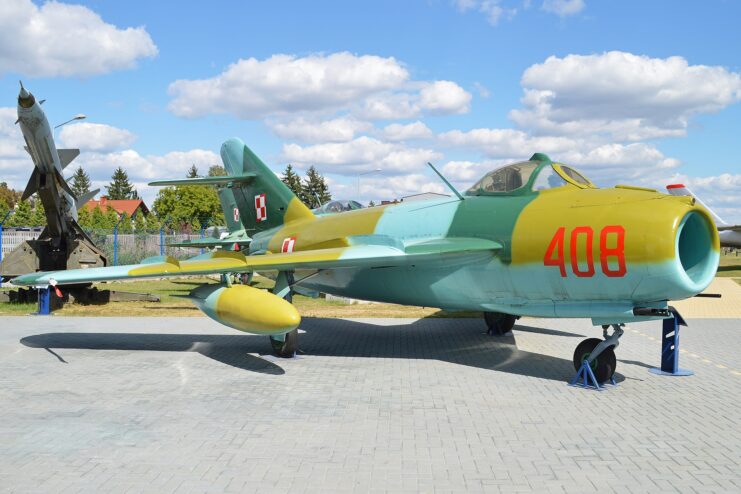
The Soviet Union was the first to adopt the MiG-17 in October 1952, but its influence extended beyond the USSR and Vietnam. Several nations in Africa, Asia and Eastern Europe either purchased, licensed or were supplied the fighter, making it a common sight in many air forces during the Cold War era.
Countries, like Egypt, Sri Lanka, China and Poland, incorporated the MiG-17 into their fleets, using it not only in defensive roles, but also in aggressive postures during regional conflicts. The former, for example, flew the aircraft during the early stages of the Suez Crisis, as well as in the North Yemen Civil War, the Six-Day War and the Yom Kippur War, among other conflicts.
Today, the only country to operate the MiG-17 – in particular, its Chinese variants, the Shenyang F-5 and FT-5 – is North Korea. As of 2012, it was reported that less than 50 percent of the 241 aircraft remain airworthy.
From fighter aircraft to air show staple
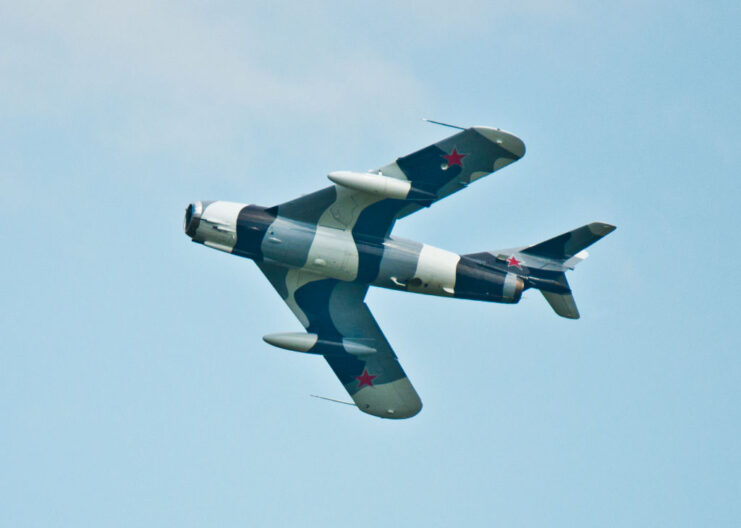
Today, the MiG-17 has found a new role in preserving military aviation history. Many units have been restored and now serve as prominent features in museums around the world. Additionally, they are a popular draw at air shows, performing breathtaking maneuvers. These exhibitions offer a glimpse into the past, showcasing the engineering marvels of the Cold War and the aviators who flew these machines under the most challenging conditions.
More from us: Forward-Swept Wings Gave the Sukhoi Su-47 ‘Berkut’ a Unique Appearance
At air shows, the MiG-17 often takes to the skies in a blaze of glory, performing rolls, loops and dives that demonstrate its agility and power. These performances not only entertain crowds, but also educate the public regarding the dynamic history of military aviation.
